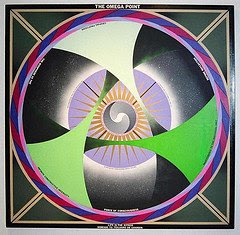
1. Particle Accelerators
Physicists have long theorized that particle accelerators could destroy the earth. When electric fields are used to accelerate protons they could collide at speed fast enough to create black holes or bits of altered matter. These small black holes would slowly engulf our planet. The pieces of altered matter, called strangeletes, would destroy any ordinary matter they came in contact with, eventually annihilating the entire planet. Although most scientists assure that none of the particle accelerators being used at the present are strong enough to bring about these events they are unsure of the abilities of the newest accelerator being built. Currently, over two-thousand physicists from thirty-four countries, universities and laboratories are aiding in the construction of The Large Hadron Collider (LHC) located near Geneva, Switzerland. It is scheduled to begin experimentation in May 2008. It is hoped that if black holes are produced they will be small enough to evaporate, but only time will tell.
2. Rogue Black Holes
Although the concept of black holes was conceived in 1915 by Einstein (some may argue earlier) they were not accepted as fact until Stephen Hawking and Roger Penrose proved their existence in 1970. From this point on black holes have been looked at with a sense of awe and fear; a place from which nothing can escape, not even light. Even scarier is the fact that our galaxy is full of collapsed stars waiting to turn into black holes, some astronomers estimate there are as many as 10 million. Luckily, most black holes are in orbit around other astronomical masses. However, if one of these black holes was able to pull itself away from orbit and head towards earth we would be clueless since they are almost impossible to see. The black hole wouldn't even have to come very close to earth to wreak havoc, if it even entered our solar system it would distort all planetary orbits causing extreme climate changes, and even expel some planets from the system.
3. Gamma-Ray Burst
Gamma-ray bursts are extremely powerful, estimated to have 10 quadrillion times more energy than our sun. They are created by the collision of two collapsed stars. Unfortunately, it is almost impossible to visualize collapsed stars making it even more difficult to predict the location of a gamma-ray burst. A burst 1,000 light years from the earth (further away than most of our stars) would create an explosion as bright as our sun and bring a hasty destruction to earth. Although our atmosphere and the ozone would provide protection at first it would soon be cooked away by the radiation. UV rays would kill the photosynthetic plankton in the ocean, which provide most of the earth's oxygen. At least one burst can be seen each day when watching our sky with gamma-ray vision; it can't be too long before there is one closer to home.
4. Omega Point
This term describes the ultimate maximum level of complexity-consciousness. Philosopher Pierre Teilhard de Chardin believed that the universe is continuously working towards this point. The socialization of humankind, including creating more complex forms of communication and information exchange, increases the collective consciousness of the human race. Just as human beings can self-reflect, one day too the universe will hit the critical Omega Point and the collective consciousness of humankind will be able to reflect upon itself. This divine center of consciousness will draw together the entire universe and end the world as we know it.
5. Bubble Nucleation
According to the leading cosmological model the universe began as a false vacuum of empty space filled with energy. This incredibly unstable, high-energy state went through the process of bubble nucleation to reach a more stable, lower-energy state. This huge release of energy caused the expansion of the universe. We would like to think that the world we now live in is a stable true vacuum but it is possible that although the universe is at a lower energy level now than it was before, we are living in another false vacuum which could collapse at any moment. If a low energy bubble nucleates in our false vacuum it would expand at the speed of light, once again changing the universe.

